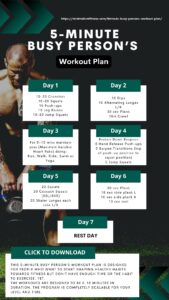If you think mobility exercises are just about stretching occasionally and using a foam roller you would be surprised to know that there’s more to it and there are a whole heap of benefits that will cross over to everyday life and training.
What is Mobility?
Mobility is a broadly used term but essentially it means the potential for movement. Terms like range of motion or ROM tend to come to mind when we talk about mobility. In order to learn how to apply the right mobility exercises you should be aware of two key mobility terms:
Passive Mobility
Passive mobility increases the range of motion through external force. Range of motion can be increased by the use of a partner or object, think of traditional static stretching as passive mobility stretches. Your physical therapist will often use passive mobility techniques in acute phases of injury to help ease you into movement
Active Mobility
Active mobility is what can be achieved when opposing muscles contract and relax, resulting in joint movement or an increase in range of motion. This is a more desirable form of mobility as it is generated from our own ability, stability and control of the movement.
Why mobility matters
Mobility is the foundation to strength development and performance. With reduced mobility or range of motion or uncontrolled excessive range of motion, you have an increased risk of injury.
When we talk about asymmetries (uneven results in opposite limbs, patterns or muscles) we also increase our injury risk factors by up to 3.5x. As we age, this also puts us at a higher risk of injury due to falls.
If you’re in doubt about your potential risk of injury, check out this article that summarises mobility tests and our 10-step self-screen.
How often should you do mobility exercises?
Everyday! The best thing about these essential at-home exercises they take little effort to get started. You don’t have to be fit and you can start with what works for you.
Essential Mobility Tools
Whether you’re improving mobility at home, on the road or in the gym there are some essential mobility tools you can use to get the most out of your training.
- Foam roller
- Trigger point ball
- Resistance band
- Mobility stick
- Massage gun (optional)
With this small amount of mobility equipment, you will be able to complete the essential trigger point stretches or releases to start moving well.
Shoulder Mobility Exercises
There’s a lot to take in when it comes to shoulder mobility. The shoulder is the most complex joint in the body and depending on injuries and your history, you may need to focus on specific areas to improve your range of motion.
As we age, the rotator cuff muscles are sometimes a reason why we struggle to get into the correct position from too much flexion, time at the desk or a lack of activity. Taking time to focus on the smaller muscles of the rotator cuff will allow you to then focus on the larger muscles and movements of the shoulder.
Thoracic mobility exercises are great to offset all the time at the desk and help improve posture. If you’re wanting to go overhead with a barbell, dumbbell or kettlebell you will need good thoracic mobility. Some of the best shoulder mobility exercises are:
- Rib grab and reach
- Quadruped rotations
- Seated Rotations
- Kettlebell halos
- Kettlebell Pullover
- Dumbbell Pullover
You can learn more about the best types of shoulder exercises to improve mobility and reduce pain here.
Ankle Mobility Exercises
To improve ankle mobility you will need to know whether it’s dorsiflexion or plantar flexion holding you back. Issues like plantar fasciitis can be a limiting factor when it comes to ankle mobility so the video below is a complete masterclass about how to test, release and improve ankle mobility. The key ankle mobility exercises you should be doing are:
- Sitting Drills
- Dorsiflexion Drills
Don’t forget to cover off on the Achilles tendon, anterior tibialis and calf muscle when you try to improve ankle range of motion. This article takes you through how to improve ankle mobility and even shows you a big toe release which may help increase movement.
Hip Mobility Exercises
The hip is another complex joint and there are a lot of movements to consider when increasing hip range of motion, those are:
- Hip Extension
- Hip Flexion
- Internal Rotation and;
- External rotation
A good rule of thumb when improving hip mobility is, to mobilise what is tight and stabilise what isn’t as the tightness is usually created from covering instability or weakness. The essential hip mobility exercises that will improve movements like your squat are:
- Couch stretch
- Lunging hip activation
- Hip Prying
- Frog Stretch
- Active Pigeon
When dealing with the posterior chain to develop proper deadlift form and your hip hinge pattern you can use these stretches to help improve hamstring and lower back mobility:
Compound Mobility Exercises
Once you’ve nailed hip, shoulder, and ankle mobility exercises you can try some more advanced mobility exercises. The best thing about these compound mobility exercises is they will challenge mobility in multiple joints at the same time.
